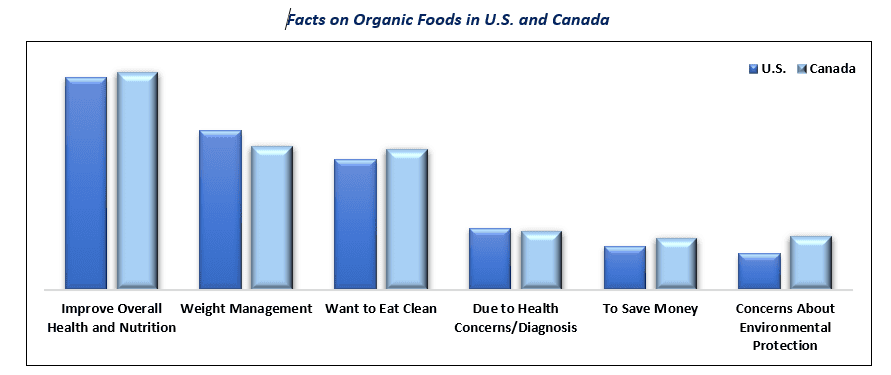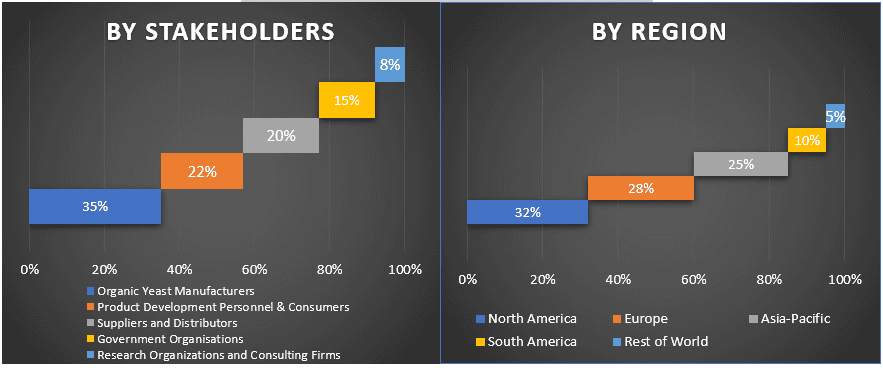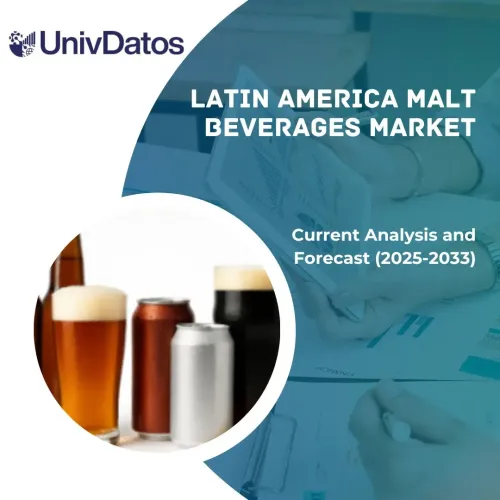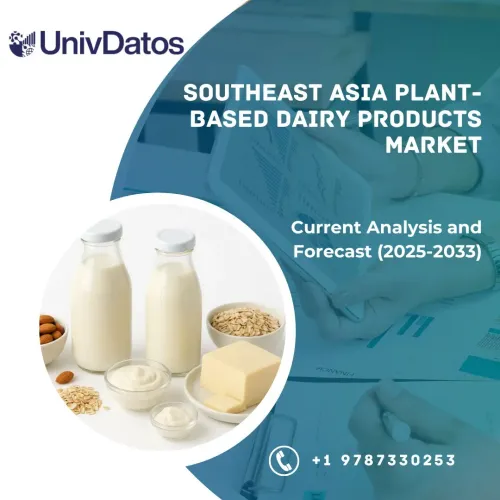- Home
- About Us
- Industry
- Services
- Reading
- Contact Us
Organic Yeasts Market: Current Analysis and Forecast (2021-2027)
Emphasis on Type (Yeast Derivative, Inactive Dry Yeast, Nutritional Yeast), Species (Kluyveromyces, Torulaspora, Candida, Saccharomyces); Form (Flakes, Liquid, Powder); Application (Food & Beverage, Bakery Industry, Pharmaceuticals, Brewing Industry, Animal Feed); Distribution Channels (Online Stores, Retail Stores, Supermarkets); and Region & Country.
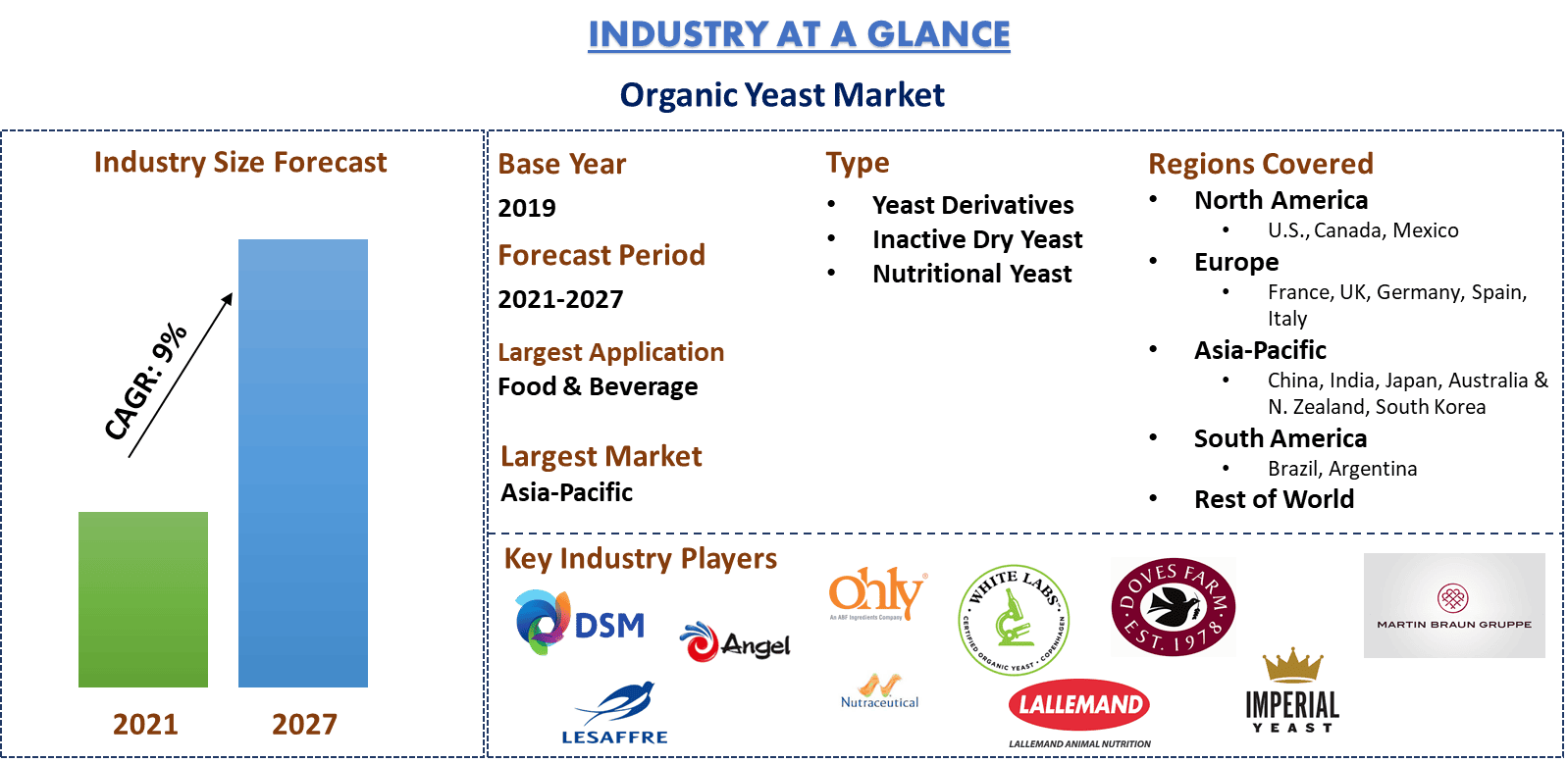
Organic Yeasts Market is expected to a market valuation of almost US$ 700 million in 2027 and is expected to grow at a significant CAGR of 9% during the forecast period (2021-2027). Factors such as increasing awareness among consumers about health & wellness, the growing need to replace monosodium glutamate (MSG) as an additive in food products, and increased demand for organic food products across the globe are among the major growth drivers of the organic yeasts market. With the increase in awareness among consumers about the benefits of organic food products, the retail sales of organic food products have increased. The US is one of the largest consumers of organic food products in the world, followed by Europe. According to recent industry statistics, organic products are now available in nearly 20,000 natural food stores and nearly 3 out of 4 conventional grocery stores. Organic sales account for over 4% of total U.S. food sales.
Monosodium Glutamate (MSG) helps in enhancing the presence of other taste-active compounds. However, the use of MSG has been clinically proven to have caused health-related issues such as obesity, oxidative stress, renal, and hepatotoxicity. Certain organic yeast manufacturers also claim that the products offered by them can be used as an alternative to MSG. For instance, Koninklijke DSM (Netherlands) claims that their product, Maxarome, can be used in a wide range of food applications instead of MSG.
Due to the pandemic, “panic-buying” became more prevalent for grocery and food ingredients. The supermarkets witnessed a surge in demand for yeast products, both active and inactive. To meet the demand in the initial phase of the pandemic, several sellers had cut up the bulk product packaging and sold in smaller sachets. With the increase in time spent at home, the trend is to consume home-cooked foods, which, in turn, has led to an increase in demand for flour and yeast products. With the need for convenience and the requirement to cater to their health concerns, consumers have increased their intake of soups, healthy snacks, and salads, which has also encouraged the demand for organic yeast products. Yeast manufacturers, such as Lallemand Inc. (Canada) and Ohly (Germany), are focusing on catering to the challenges and have increased their production capacities. For instance, due to the increase in demand for dietary supplements during the pandemic, Angel Yeast Co., Ltd (China), has witnessed an expansion of its yeast beta-glucan production capacity. In another instance, Bluebonnet Nutrition Corporation (US) has undertaken stringent measures at the plant level and increased its production capacity to meet the growing demand from consumers who are targeting to improve their immunity.
The organic yeast market is highly fragmented. The availability of numerous global and local players across regions makes the industry highly competitive. The key players with a considerable market share in the industry are Koninklijke DSM N.V, Angel Yeast Co. Ltd, Ohly, White Labs Copenhagen, Doves Farm Foods Ltd., Martin Braun-Gruppe, Nutraceutical International Corporation, Lesaffre, Lallemand, Imperial Yeast. Several M&As along with partnerships have been undertaken by these players to facilitate customers with high-quality and innovative products.
Insights Presented in the Report
“Amongst Type, Yeast Derivative is anticipated to dominate the market during the analyzed period”
Based on type, the organic yeast market is mainly bifurcated into types such as yeast derivative, inactive dry yeast, and nutritional yeast. In 2020, the Yeast Derivatives segment of the organic yeast market was valued at USD XX Million and is likely to reach USD XX Million by 2027 growing at a CAGR of XX% from 2021-2027 due to increasing consumption of food products such as baked goods, dairy products, etc. is increasing the demand for yeast derivatives in the global market.
“Amongst Species, Saccharomyces segment dominated the market during the forecast period”
Based on the species, the market is mainly fragmented into Kluyveromyces, Torulaspora, Candida, and Saccharomyces. In 2020, the saccharomyces segment accounted for a maximum market revenue share of XX% and is expected to remain dominant during the analyzed period.
“Amongst Form, Powder segment dominated the market during the forecast period”
Based on the form, the market is mainly fragmented into Flakes, Liquid, and Powder. In 2020, the powder segment accounted for a maximum market revenue share of XX% and is expected to remain dominant during the analyzed period.
“Amongst Application, Food & Beverage segment dominated the market during the forecast period”
Based on the application, the market is mainly fragmented into Food & Beverage, Bakery Industry, Pharmaceuticals, Brewing Industry, and Animal Feed. In 2020, the food & beverage segment accounted for a maximum market revenue share of XX% and is expected to remain dominant during the analyzed period.
“Amongst Distribution Channels, Online segment dominated the market during the forecast period”
Based on distribution channels, the market is mainly fragmented into Online Stores, Retail Stores, and Supermarkets. In 2020, the online segment accounted for a maximum market revenue share of XX% and is expected to remain dominant during the analyzed period.
“Asia-Pacific is among the top contributor in the organic yeast market”
For a better understanding of the market dynamics of the Organic Yeast Market, a detailed analysis was conducted for different regions across the globe including North America (United States, Canada, Mexico, and Rest of North America), Europe (France, United Kingdom, Germany, Spain, Italy, and Rest of Europe), Asia Pacific (China, India, Japan, Australia & New Zealand, South Korea, and Rest of Asia-Pacific), South America (Brazil, Argentina, and Rest of South America), and Rest of World (Middle East, and Africa). Asia-Pacific dominated the organic yeasts market and was valued at USD XX Million in 2020 and is likely to reach USD XX Million by 2027 growing at a CAGR of XX% from 2021-2027.
Reasons to buy this report:
- The study includes market sizing and forecasting analysis validated by authenticated key industry experts
- The report presents a quick review of overall industry performance at one glance
- The report covers an in-depth analysis of prominent industry peers with a primary focus on key business financials, product portfolio, expansion strategies, and recent developments
- Detailed examination of drivers, restraints, key trends, and opportunities prevailing in the industry
- The study comprehensively covers the market across different segments
- Deep dive regional level analysis of the industry
Customization Options:
Organic Yeasts Market can further be customized as per the requirement or any other market segment. Besides this, UMI understands that you may have your own business needs, hence feel free to connect with us to get a report that completely suits your requirements.
Table of Content
Analyzing the historical market, estimation of the current market, and forecasting the future market of the Organic Yeast Market were the three major steps undertaken to create and analyze the demand and application of organic yeast for the health & wellness sources across major regions globally. Exhaustive secondary research was conducted to collect the historical market numbers and estimate the current market size. Secondly, to validate these insights, numerous findings and assumptions were taken into consideration. Moreover, exhaustive primary interviews were also conducted, with industry experts across the value chain of the organic yeast sector. Post assumption and validation of market numbers through primary interviews, we employed a top-down/bottom-up approach to forecast the complete market size. Thereafter, market breakdown and data triangulation methods were adopted to estimate and analyze the market size of segments and sub-segments the industry pertains to. Detailed methodology is explained below:
Analysis of Historical Market Size
Step 1: In-Depth Study of Secondary Sources:
Detailed secondary study was conducted to obtain the historical market size of the organic yeast through company internal sources such as annual report & financial statements, performance presentations, press releases, etc., and external sources including journals, news & articles, government publications, competitor publications, sector reports, third-party database, and other credible publications.
Step 2: Market Segmentation:
After obtaining the historical market size of the organic yeast market, we conducted a detailed secondary analysis to gather historical market insights and share for different segments & sub-segments for major regions. Major segments included in the report are type, species, form, application, distribution channel, and end-user. Further country-level analyses were conducted to evaluate the overall adoption of organic yeasts in that region.
Step 3: Factor Analysis:
After acquiring the historical market size of different segments and sub-segments, we conducted a detailed factor analysis to estimate the current market size of organic yeast. Further, we conducted factor analysis using dependent and independent variables such as the growing demand, product launches, and rising awareness towards health and wellness among others. A thorough analysis was conducted for demand and supply-side scenarios considering top partnerships, merger and acquisition, business expansion, and product launches in the organic yeasts industry across the globe.
Current Market Size Estimate & Forecast
Current Market Sizing: Based on actionable insights from the above 3 steps, we arrived at the current market size, key players in the organic yeasts market, and market shares of the segments. All the required percentage shares split, and market breakdowns were determined using the above-mentioned secondary approach and were verified through primary interviews.
Estimation & Forecasting: For market estimation and forecast, weights were assigned to different factors including drivers & trends, restraints, and opportunities available for the stakeholders. After analyzing these factors, relevant forecasting techniques i.e. top-down/bottom-up approach was applied to arrive at the market forecast about 2027 for different segments and subsegments across the major markets globally. The research methodology adopted to estimate the market size encompasses:
- The industry’s market size, in terms of value (US$) and the adoption rate of organic yeasts across the major markets domestically
- All percentage shares, splits, and breakdowns of market segments and sub-segments
- Key players in the organic yeasts market in terms of services offered. Also, the growth strategies adopted by these players to compete in the fast-growing market
Market Size and Share Validation
Primary Research: In-depth interviews were conducted with the Key Opinion Leaders (KOLs) including Top Level Executives (CXO/VPs, Sales Head, Marketing Head, Operational Head, and Regional Head, Country Head, etc.) across major regions. Primary research findings were then summarized, and statistical analysis was performed to prove the stated hypothesis. Inputs from primary research were consolidated with secondary findings, hence turning information into actionable insights.
Split of Primary Participants in Different Regions
Market Engineering
Data triangulation technique was employed to complete the overall market estimation and to arrive at precise statistical numbers of each segment and sub-segment of the organic yeasts market. Data was split into several segments & sub-segments post studying various parameters and trends in the areas of type, species, form, application, distribution channel, and end-user of the organic yeasts market.
Main Objective of the Organic Yeasts Market Study
The current & future market trends of organic yeasts were pinpointed in the study. Investors can gain strategic insights to base their discretion for investments from the qualitative and quantitative analysis performed in the study. Current and future market trends were determined the overall attractiveness of the market at a regional level, providing a platform for the industrial participant to exploit the untapped market to benefit as a first-mover advantage. Other quantitative goals of the studies include:
- Analyze the current and forecast market size of organic yeasts in terms of value (US$). Also, analyze the current and forecast market size of different segments and sub-segments
- Segments in the study include areas of type, species, form, application, distribution channel, and end-user
- Define and analysis of the regulatory framework for the organic yeasts industry
- Analyze the value chain involved with the presence of various intermediaries, along with analyzing customer and competitor behaviors of the industry
- Analyze the current and forecast market size of the organic yeasts market for the major region
- Major regions studied in the report include North America (United States, Canada, Mexico, and Rest of North America), Europe (France, United Kingdom, Germany, Spain, Italy, and Rest of Europe), Asia-Pacific (China, India, Japan, Australia & New Zealand, South Korea, and Rest of Asia-Pacific), South America (Brazil, Argentina, and Rest of South America), Rest of the World (Middle East, Africa)
- Company profiles of the organic yeasts market and the growth strategies adopted by the market players to sustain in the fast-growing market
- Deep dive regional level analysis of the industry
Related Reports
Customers who bought this item also bought

